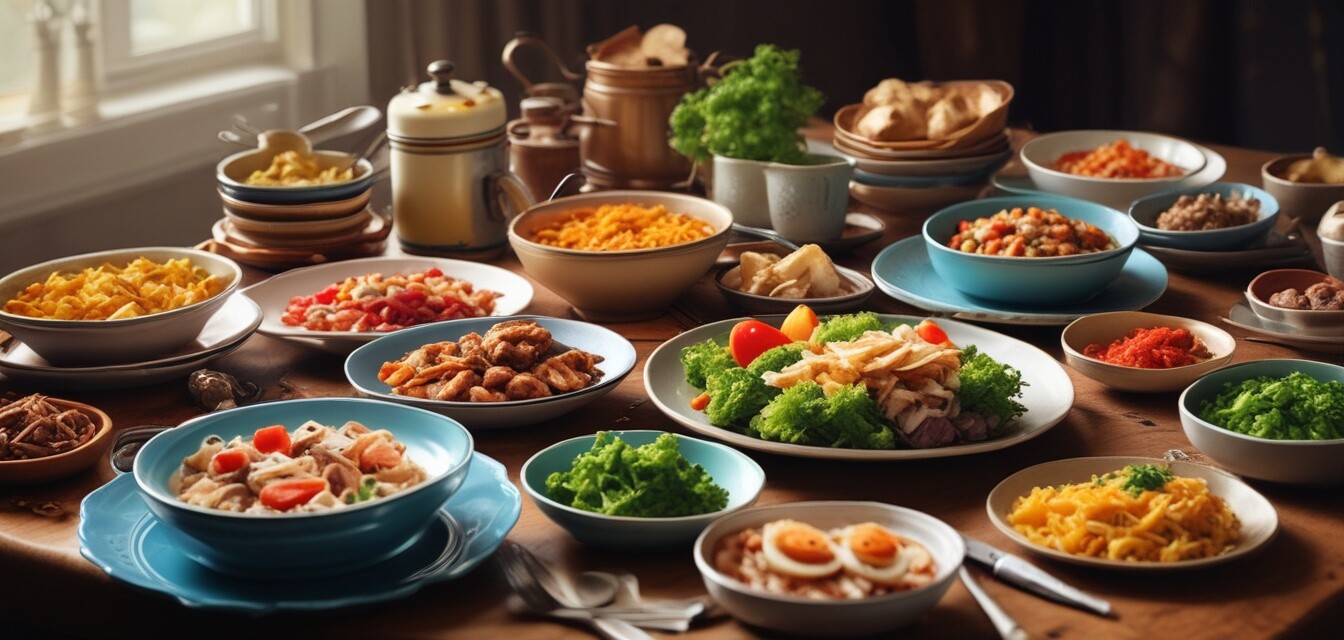
How to Use Leftovers Creatively in Your Cooking
- Transform leftovers into innovative dishes to minimize waste.
- Utilize various cooking techniques for taste enhancement.
- Plan meals thoughtfully to streamline the cooking process.
- Get inspired by simple tips and recipes using your leftovers.
Leftovers often sit in the refrigerator, leaving home cooks with a challenge. Instead of tossing them out, why not transform these ingredients into something new? In this guide, we will explore creative ways to use leftovers, strategies for reducing waste, and tips for making meal preparation more efficient.
Why Use Leftovers?
Using leftovers creatively can not only save you time and money but also ensure that food doesn't go to waste. Here are some compelling reasons to consider:
- Cost-effective: Save money by reusing ingredients.
- Time-saving: Minimize meal prep time.
- Environmentally friendly: Reduce food waste.
- Encourages creativity: Explore new dishes and flavors.
Tips for Using Leftovers Creatively
Here are some effective strategies to reinvent your leftovers:
1. Plan Your Meals
Effective meal planning can make a significant difference. Consider the following:
- Designate a day for leftover transformation, turning them into new meals.
- Pair similar ingredients in different dishes to maintain variety.
- Store leftovers in clear containers to keep them visible and accessible.
2. Incorporate Cooking Techniques
Different cooking methods can enhance the taste of your leftovers:
- Stir-frying: Quickly throw leftovers into a hot pan with some oil for a delicious stir-fry.
- Baking: Layer leftovers in a baking dish with cheese and sauce for a casserole.
- Blending: Use a blender to create soups or smoothies from leftover veggies and fruits.
3. Get Inspired by Cuisine
Different cultures have unique ways of repurposing leftover ingredients. For ideas, consider exploring:
- Asian fried rice: Use leftover rice and vegetables.
- Mexican tacos: Fill tacos with any leftover meat or veggies.
- Italian frittata: Perfect for using up eggs and leftover vegetables.
Creative Leftover Recipe Ideas
Here are a few mouth-watering recipe ideas to inspire you:
| Leftover Ingredient | Creative Use |
|---|---|
| Roast Chicken | Chicken salad sandwiches or tacos |
| Vegetable Medley | Mixed vegetable soup or stir-fry |
| Rice | Fried rice or rice pudding |
| Pasta | Pasta bake or cold pasta salad |
| Fruits | Smoothies or fruit crisps |
Benefits of Using Leftovers
The advantages of utilizing leftovers extend beyond just saving money. Here are a few:
Pros
- Saves money and reduces grocery bills.
- Encourages culinary creativity and experimentation.
- Contributes to a sustainable lifestyle by reducing waste.
- Allows for a diverse menu without extra effort.
Cons
- Can become monotonous if not varied enough.
- Inconsistent freshness may affect taste.
- Requires some planning and organization.
Conclusion
By mastering the art of using leftovers, you can create exciting new dishes while helping to reduce food waste. Explore different cooking methods, take inspiration from global cuisines, and allow your creativity to flourish in the kitchen. Embrace your leftover challenges, and turn them into an opportunity to craft delicious meals.
Tips for Beginners
- Start small: Begin with simple recipes that require minimal preparation.
- Label containers: Keep track of leftover food and when it should be consumed.
- Experiment: Don’t hesitate to try new combinations and flavors.